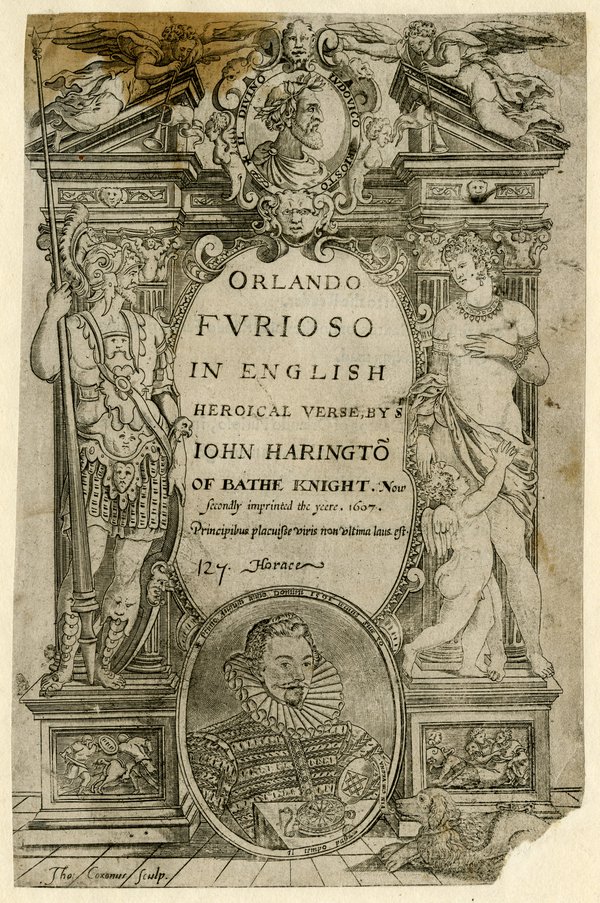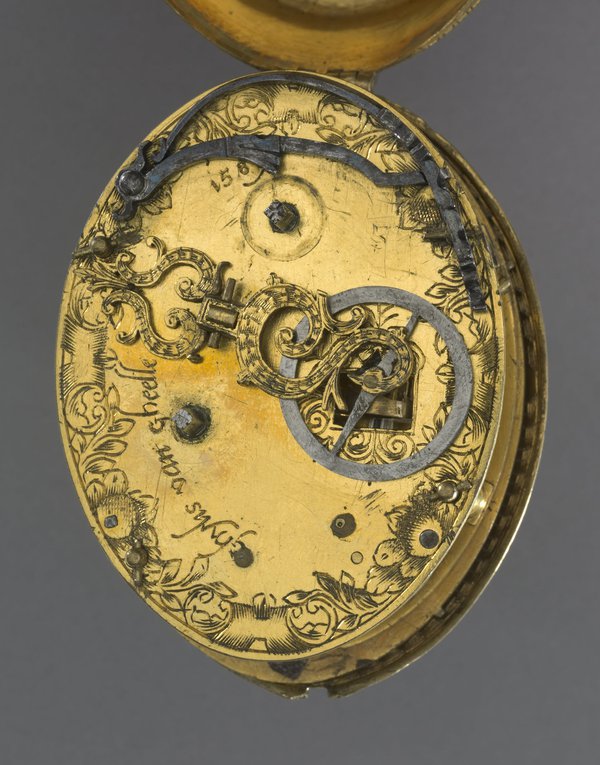Just so you know how rich I am
This post was written by David Thompson
Today some people wear expensive watches partly to demonstrate their wealth. They either sparkle with diamonds or they impress with their complexity of mechanical magnificence. You might think that this is a new idea, but in fact this tradition goes back centuries to when the first watches were made in the early part of the 16th century.
An interesting example of this comes from the title page of Sir John Harrington’s translation of Orlando Furioso, (The Frenzy of Orlando, an Italian epic poem by Ludovico Ariosto first published in 1516.) Harrington’s translation, which appeared in 1591 was the first in English. The story contains politics, war, religion and unrequited love as well as fantasy and consists of forty-six eight-line verses in rhyme – quite a challenge for the translator.

On the title page of the work is an engraved portrait of Sir John proudly sporting a fine oval-cased watch with the Harrington shield of arms engraved inside the cover. The portrait is dated 1st August 1591 and bears the inscription ‘Il tempo passa’ and the legend that Sir John was thirty years old when the portrait was taken – time passes and this is a moment in the life of the author.

A similar watch can be found in the British Museum collections, made by an immigrant Flemish worker in London, Ghylis van Gheele and here too, the watch sports a shield of arms, This time of the Giffard family of St. Andrew’s Abbey in Northamptonshire.


In late Elizabethan England what better way to show everyone just how wealthy and successful you were.